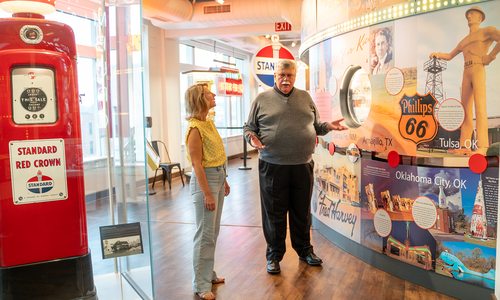
Lifestyle
How Madelyn Muncy is Helping Others with Eating Disorders
After her own personal experience, high school junior Madelyn Muncy has made it her mission to raise thousands of dollars for eating disorder organizations.
By Jenna deJong
Feb 2018

Madelyn Muncy is a junior at Lockwood High School, vice president of Future Business Leaders of America and a member of Future Farmers of America. Her favorite subject in school is math, she likes to golf and she’s interested in dietetics as a college major. In her seemingly nonexistent spare time, she has also raised money for eating disorder organizations—$27,658 to be exact.
Throughout middle school, Muncy made it a goal to live a healthy lifestyle. She played sports and was constantly active, but she and her parents started noticing a health concern. Muncy complained of stomach and chest pains and cold chills. Her parents noticed Muncy’s mood change and her lack of energy. Eventually, Muncy and her parents sought medical attention, and in seventh grade, Muncy was diagnosed with anorexia nervosa. A year later, Muncy started advocating for others with eating disorders. Her first project was designing and selling T- shirts, a project she initially funded by herself.
“I sold 94 shirts, and Prairie Mountain Screening sold them, too, and together we raised $2,350,” Muncy says. “The shirts said ‘Brave, Strong, Worthy.’ That was three years ago and I still see everyone wearing them.”
After the 2015 fundraiser, Muncy’s dad suggested a charity golf tournament, which is now a tradition. With the help of her parents, Muncy sells tickets for teams of two and goes door-to-door asking for $25 sponsorships from local businesses. The first year she raised $9,008.70, including T-shirt sales. In 2016, she raised $8,161.30. In 2017, that jumped to $10,488. Despite this success, Muncy was indecisive at first about which organization should receive the money. In 2015, it was a personal choice.
“I wanted to make sure the money I was donating was going toward what I wanted it to go toward,” Muncy says. “I wanted to make sure people with eating disorders were affected by [the money].”
Muncy had sought treatment at Selah House, an eating disorder treatment center in Anderson, Indiana, focused on medical, nutritional and spiritual care. She called the CEO and asked about the donation process.
“He would basically put the money on steroids,” Muncy says. “He said he would cut the cost of one person’s treatment and keep it to $9,000 so that my money was fully paying for someone’s recovery.”
Since then, Muncy has run another T-shirt fundraiser and put together two more charity golf tournaments, and she has donated money to The Cashmere Foundation and the National Eating Disorders Association. She’s still in recovery and is currently brainstorming new ideas on how to help others and wow her community yet again.












